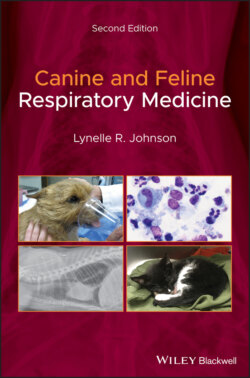Читать книгу Canine and Feline Respiratory Medicine - Lynelle Johnson R., Lynelle R. Johnson - Страница 35
Arterial Blood Gas Analysis
ОглавлениеArterial samples are obtained by direct puncture of the dorsal metatarsal artery in dogs and the femoral artery in cats and small dogs. In anesthetized animals, the lingual artery can yield a sufficient sample for analysis. It is easiest to use a self‐filling, pre‐heparinized syringe to obtain an arterial blood gas. The artery is palpated and stabilized with two fingers of one hand while the syringe is firmly placed through the wall of the artery. Typically, the syringe will fill quite rapidly when the artery is entered (versus the vein), although low pulse pressures in sick animals can make this difficult to interpret. When there is uncertainty about whether or not an arterial sample has been obtained, a venous sample can be submitted for comparison. Approximately 0.5 ml blood is needed for analysis and the sample must be tightly stoppered to prevent entrance of air into the sample and stored on ice until evaluated. After withdrawal of the needle from the artery, firm pressure is applied to the vessel for 3–5 minutes. An arterial blood gas analysis measures PaO2, PaCO2, pH, total carbon dioxide (CO2), and hemoglobin saturation with oxygen, and allows calculation of bicarbonate, base excess and deficit, and oxygen content (Table 2.1).
Table 2.1 Normal blood gas values for dogs and cats.
| Dog | Cat | |
| PaO2 (mmHg) | 90 (80–105) | 100 (95–105) |
| PaCO2 (mmHg) | 37 (32–43) | 31 (26–36) |
| pH | 7.35–7.45 | 7.35–7.45 |
| HCO3 (mmol/l) | 22 (18–26) | 18 (14–22) |
HCO3, bicarbonate; PaCO2, partial pressure of carbon dioxide; PaO2, partial pressure of oxygen.
